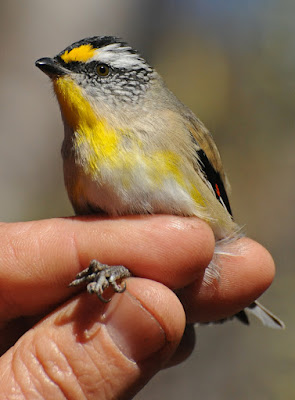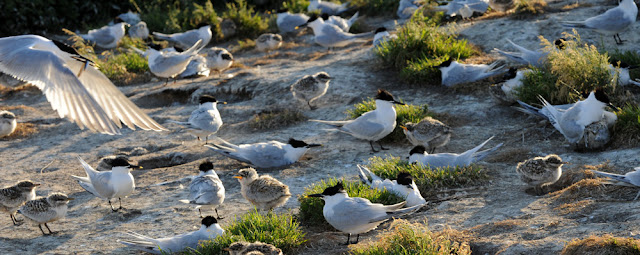
Splendid Fairy-wren Malarus splendens adult male
Last weekend I went out west with a few friends, surveying birds in some National Parks in and around the mallee of New South Wales, centred around the Round Hill National Park. The trip was organised (very well) by Mark Clayton, and other members were, Suzie Bond, Steve and Pru Holliday, Kim Sebo and Jennifer Hine.
There were high numbers, thousands, of Masked Woodswallows Artamus personatus and White-browed woodswallows A. superciliosus chattering in huge flocks above us when at most of the sites. And there were hundreds of Black Honeyeaters Certhionyx niger and Pied Honeyeaters C. variegatus feeding on the flowering trees and shrubs, especially the Eremophila. We didn't see any Malleefowl Leipoa ocellata - they are scarce due to predation by cats and foxes- but we did record most other local species, such as Gilbert's Whistler Pachycephalata inomata, Chestnut Quail-thrush Cinclosoma castanotus, Southern Scrub-robin Drymodes brunneopygia and the stunningly blue Splendid fairy-wren Malarus splendens.
Southern Scrub-robin Drymodes brunneopygia
male singing from a low branch in the mallee scrub
The dark streak through its eye with the contrasting white flick is a diagnostic feature,
as are the pair of off-white wing bars, and the way the bird lets its wings hang down.
Chestnut-rumped Thornbill Acanthiza uropygialis
carrying food, a small moth, into its nesthole to feed chicks.
Emu Dromaius novaehollandiae feathers caught on barbed wire where a bird has jumped over a fence.



















































